 |
| Small towns are a blessing when researching your family. |
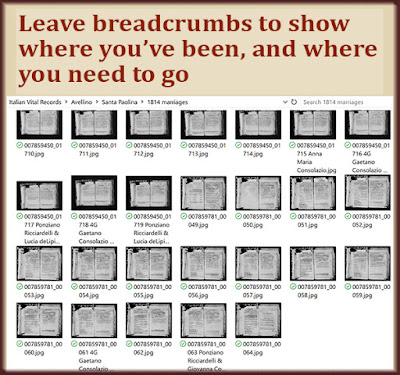 |
| Leave no stone unturned. Each document could be important to you. |
And speaking of big, wide, deep family trees:
 |
| Small towns are a blessing when researching your family. |
 |
| Leave no stone unturned. Each document could be important to you. |
And speaking of big, wide, deep family trees:
 |
| My genealogy research gives me an appreciation for my lost culture. |
 |
| We each have our own reasons for taking up this hobby. |
And speaking of why we love genealogy:
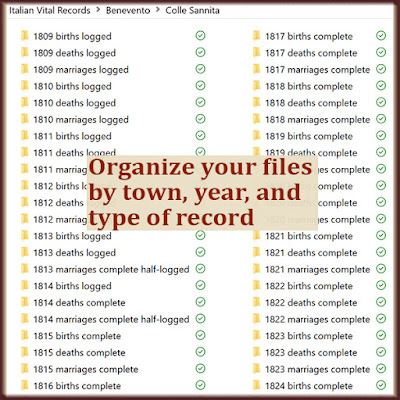 |
| Simplify your search by organizing your downloads. |
 |
| A well-organized spreadsheet is best for making records searchable. |
 |
| Adding people's names to the file names makes the collection searchable. |
And speaking of working efficiently:
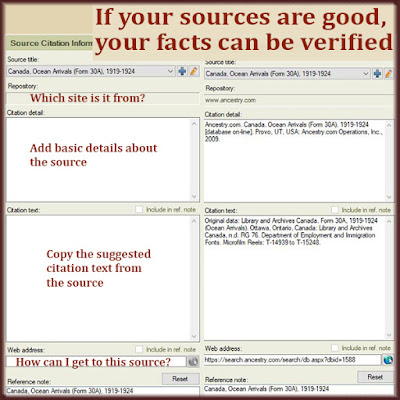 |
| Create your source citations by copying a few bits of information. |
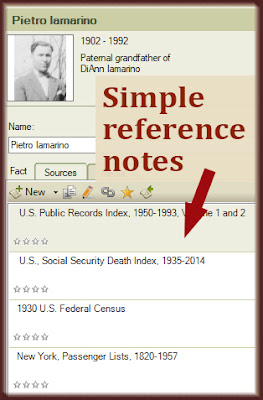 |
| Simple reference notes keep the family tree software uncluttered. |
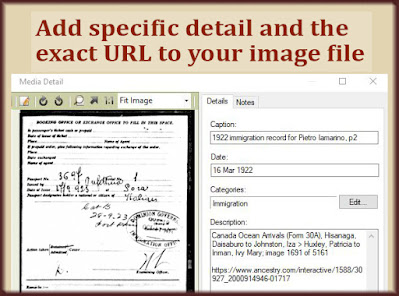 |
| Link to your general source, but pack all the specifics into the document image. |
And speaking of making your family tree facts better:
Who and what are you overlooking on that ship manifest?
On 10 February 1909 my great grandfather boarded the S.S. Cretic in Naples, bound for New York City. He came to America a handful of times, earned money and went back home to Italy.
But his 1909 ship manifest is absolutely my favorite. His name is on line 3. But the men on lines 2, 4, 5 and 6 are all from his hometown. In fact, they're all related. Closely related.
Have you ever noticed on any of your relatives' ship manifests that people are often listed by town? You'll see several lines of people from one town, then several lines of people from another town.
Are you looking carefully at the other people from your relative's town? What are their last names? What are the names of the relatives they're leaving at home? Who are they joining at their destination, and what address are they going to?
If you look at these facts, you may find that some of the townspeople are related to your ancestor.
Take a look at my 5 townsmen.
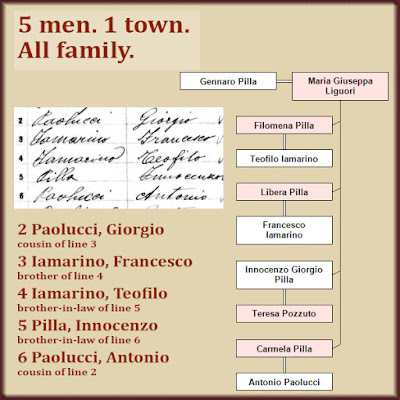 |
| Their relationships may not be obvious. Find all the clues and do some digging. |
On lines 3 and 4 you have 2 Iamarino brothers. They happen to be married to 2 Pilla sisters. Those sisters have a brother Innocenzo on line 5. They also have a sister who's married to Antonio Paolucci on line 6. So the men on lines 3–6 are brothers or brothers-in-law.
They're all travelling with another Paolucci on line 2. He is their cousin, and with some more research, I'm confident he'll be a closer cousin. Maybe he'll be another brother-in-law, too!
The first thing to catch my eye on this ship manifest was the name of my great grandfather's hometown: Colle Sannita. I saw it there with several ditto marks, meaning here were several people from the same town. Not a husband and wife and their kids—but 5 men.
This makes a messy graphic, but humor me.
 |
| Look beyond the name and ages, and see all there is to learn. |
When I found this ship manifest, I was searching only for my great grandfather, Francesco Iamarino. But all those Colle Sannita people were calling out to me.
This was the first time I learned of my great grandfather's brothers: Teofilo, on the ship with him, and Giuseppe, who they were going to join.
I checked the column where passengers list the name of a relative they left at home. Francesco lists his wife Libera. That's my great grandmother. Teofilo lists his wife Filomena.
Suddenly I had proof for a family story I'd heard. Two Iamarino brothers had married two Pilla sisters. Sure enough, Libera and Filomena were the sisters who married the brothers Francesco and Teofilo.
But wait! There's more!
Notice how all 5 men are going to the exact same destination. They are going to an address in New York City to join Giuseppe Iamarino.
Giuseppe is:
Wait. What? Is Antonio Paolucci on line 6 both my great grandfather's cousin and my great grandmother's brother-in-law? I've got more research to do.
If you're downloading your ancestor's ship manifest and simply filing it away, go back and look at it. How many names, relationships and clues are waiting there for you to discover?
And speaking of who else is there:
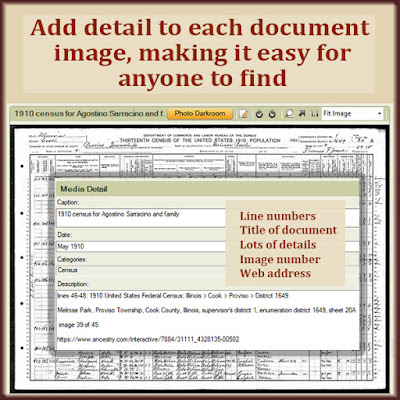 |
| Add facts to each document in your family tree. |
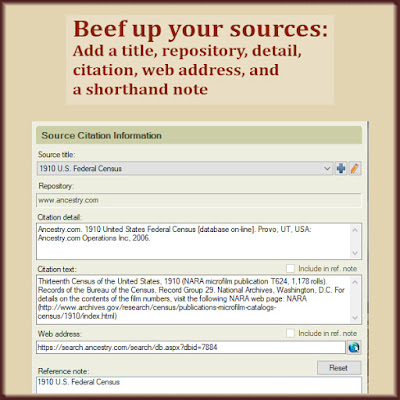 |
| Add enough facts to your source to make it official and retraceable. |
 |
| This orderly arrangement of addresses makes it easy to see which relatives lived near one another. |